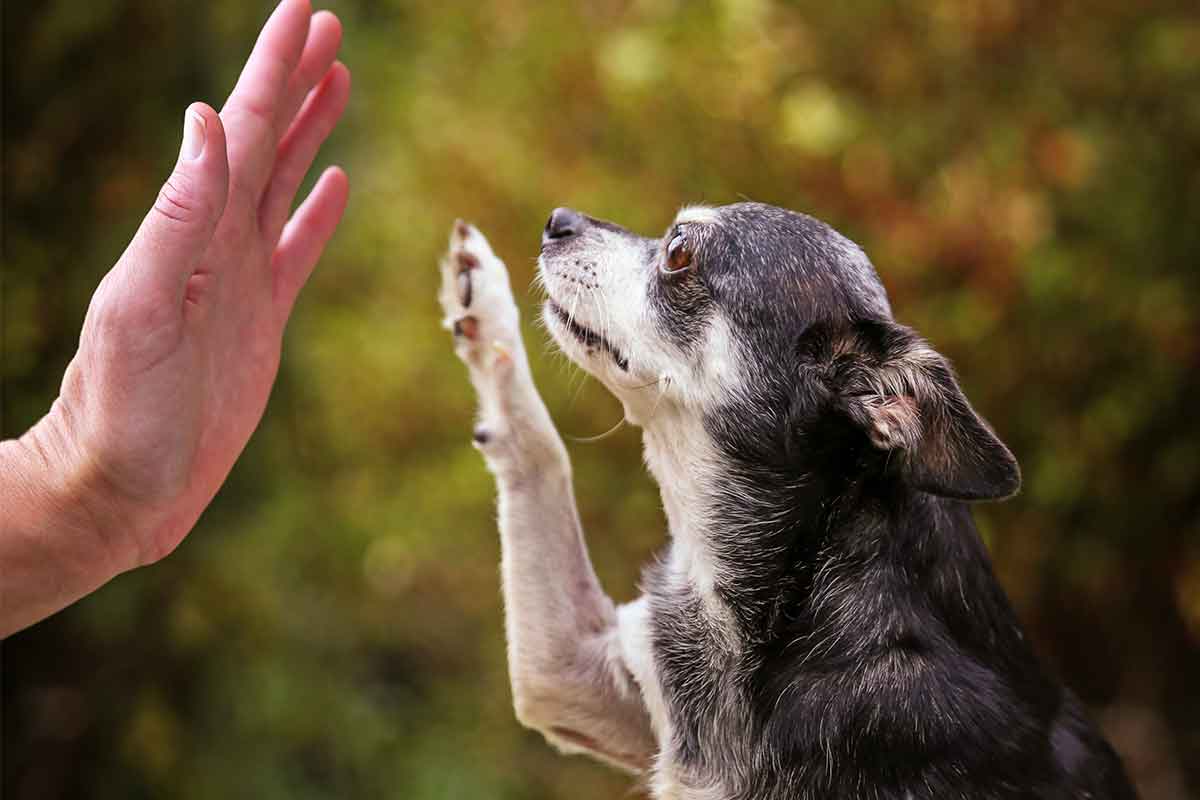Old dogs are the best dogs. They know the rules, they’re not full of crazy energy, and they love nothing better than a good nap. The downside, though, is that all that makes it easy to slip into the habit of not spending as much time with them. Your dog may no longer need long runs or exhausting games of fetch, but he still needs mental and physical stimulation and fun time with you.
Positive reinforcement training is a great way to fulfill all those needs. Old dogs can learn new tricks and behaviors, and while for your dog it will seem like a great game that earns him tasty treats, it can also help make dealing with the inevitable problems of aging less stressful for both of you.
Learning new things is obviously exercise for the mind, but tricks can also be good physical exercise for a dog who can’t do those long runs anymore, observes Fear Free certified trainer Laura Monaco Torelli. “I like to work with the dog’s core,” she says. “I like to teach dogs to spin right and left.” Doing the spin in both directions works muscles on both sides equally.
Some tricks are more than just fun and exercise, though – they can help with an aging dog’s daily activities. Training a small dog to get up on a stepstool is not just cute, it can also be useful: when jumping on and off the couch gets to be too hard on her old bones, that stepstool can help. And once your dog knows that getting up on something earns a reward, she’ll be easier to persuade to use any new ramps or stairs she may need in the future.
Torelli says many aspects of care can be made part of your training games. It’s never too late to teach your dog to enjoy being handled–and that’s all the more important as he ages. “As our dogs get older, just like with people, things just get more sore more quickly,” says Torelli. Exams may be more uncomfortable, but learning that a touch on the ear or hips is followed by a tasty treat will turn it into a positive experience. “Working on these behaviors before they show signs of discomfort can be part of a fun training activity,” she says.
Senses such as sight and hearing can worsen with age, so be prepared. If your dog already knows verbal cues for tricks or behaviors such as “sit,” teach a hand signal too, so you’ll still have a way to communicate if he goes deaf. Likewise, if you’re already using hand signals, teach verbal cues.
It’s important, of course, to be aware of your dog’s physical limitations. If your dog is eager to play, the signs may be subtle. Reluctance and hesitation may be an indication of discomfort, so don’t push too hard. Older dogs are prone to obesity, so think about using parts of the dog’s regular meals for training.
While it’s never too late to train, it’s also never too early. “Proactive training should be on a dog owner’s radar,” says Torelli. Not only is it easier to teach some of these practical behaviors before they’re needed, research has shown that a history of positive reinforcement training during their lives seems to protect dogs against cognitive decline.
But whether useful behaviors or just cute tricks, training is fun for your dog and a bonding experience for both of you, and there’s no age limit on that. “It helps extend the joy of our relationships with our dogs,” says Torelli. “It can make us feel sad to see that they’re not as young and bouncy as they used to be.” But get in the habit of training and you’ll be rewarded too. “We get the reinforcement of seeing our dogs get more active — and maybe walking over to us with that look that says, ‘Hey, you want to train now?’”
This article was reviewed/edited by board-certified veterinary behaviorist Dr. Kenneth Martin and/or veterinary technician specialist in behavior Debbie Martin, LVT.








